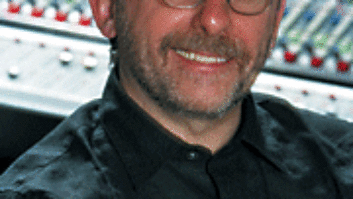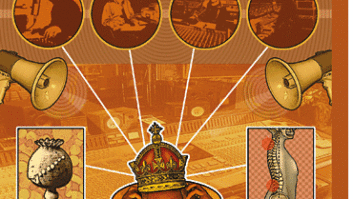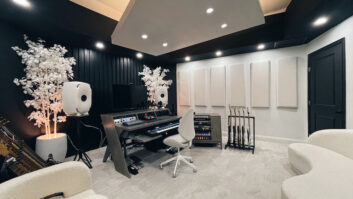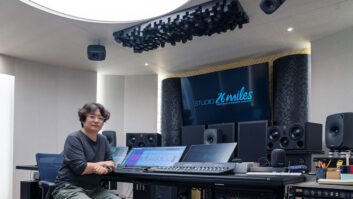Why do engineers build home studios?
Their motivations tend to fall into two categories. On the one hand are those who — for lifestyle, business or other reasons — create facilities that allow them to do virtually all their work at home. These engineers usually have solid enough track records to ensure that projects will follow them wherever they go.
On the other hand are engineers for whom a home studio is little more than a workshop — a demo room, or a place that might allow them to do minor editing on works in progress in commercial facilities. The engineers’ budgets for such setups are usually as modest as their expectations for them.
Then there’s Elliot Scheiner. His new Eyeball studio — which occupies a second-floor room in his home in Reading, Conn. — is neither a be-all, end-all facility nor a rinky-dink basement contraption. It is a well-appointed, professionally spec’d studio designed to accommodate a niche within Scheiner’s new specialty of remixing old masters in 5.1 channels: projects that simply wouldn’t get done on commercial studio budgets.
That means Scheiner continues to do the bulk of his work at his favorite “outside” studios, which include Presence in Westport, Conn., Sony and Hit Factory in New York, and Capitol in L.A.
“The reason I built this room is that, after the September 11 attacks, as things started to more or less get back to normal, I received inquiries about doing a couple of different 5.1-channel projects. People would say, ‘I would like to do this or that but I honestly can’t afford to spend the kinds of budgets we’ve been spending to do the major catalog pieces. If I can’t do it for X number of dollars, I won’t do it at all.’ I thought it was more important to have catalog out, because this is an emerging market, so I built a room designed specifically for low-budget stuff.”
Noting that he went back to Presence to remix R.E.M.’s Automatic for the People, Scheiner says, “I didn’t build this to put studio owners in jeopardy.”
The centerpiece of Eyeball is the first installation of the new Yamaha DM 2000 digital console and a Steinberg Nuendo system. Other equipment highlights include Steinberg DD8 format converters, Alesis HD24 hard-disk recorders, a Yamaha SREV1 sampling reverb, dbx 160SL compressors, five Yamaha MSP10 monitors, an Eventide Orville processor, a Studio Technologies StudioComm 5.1-channel controller, and Monster cabling throughout the studio.
Scheiner chose the Yamaha DM 2000 because of its sonic performance, high resolution and extensive channel capacity. Comparing it to other digital consoles tailored to high-end project studios, Scheiner says, “I love this console. It has so many bells and whistles. I wanted a board that gave me more than 24 channels of 24-bit, 96kHz audio, and with the Yamaha, I have 96 full-resolution channels.”
Scheiner designed and built the studio himself, with extensive input from Sony Studios VP Dave Smith, who advised him on sonic treatments and other acoustics issues. “Dave took a look at the room and talked about how to treat it sonically,” says Scheiner. “He was my main consultant.”
The first project Scheiner undertook at Eyeball was a 5.1-channel remix of Candy Man, an early-’90s solo album by Toto singer/guitarist Steve Lukather that was originally released in Europe. The surround version will be issued this year by DTS Entertainment as part of a guitar series.
When Scheiner went to check his Candy Man mix at Darcy Proper’s mastering suite at Sony Studios, he discovered a bump in the upper midrange that indicated a problem in his studio’s acoustics. Fortunately, he was able to rectify it easily, and the room is now accurate to Scheiner’s exacting specifications.
Since completing the Lukather album, Scheiner has been remixing Automatic for the People and Donald Fagen’s Nightfly in 5.1, as well as doing a new surround version of Steely Dan’s Gaucho at a higher resolution than his original 5.1 mix — which was among the first projects done for discrete multichannel in the late-’90s. In addition, Scheiner is working at New York’s Sear Sound on a new Steely Dan album, which for now will be stereo-only.
Whereas all those major projects are taking place in commercial studios, Scheiner anticipates getting back to his home facility in the near future to remix a Roy Orbison greatest-hits project in 5.1, and a Japanese pop album.
“I love working at home,” he says. “I got up this morning, drove my son to school, and went to work. I haven’t gotten out of any gnarly clothes yet. That’s pretty cool.”
Paul Verna isMix’s New York editor.






